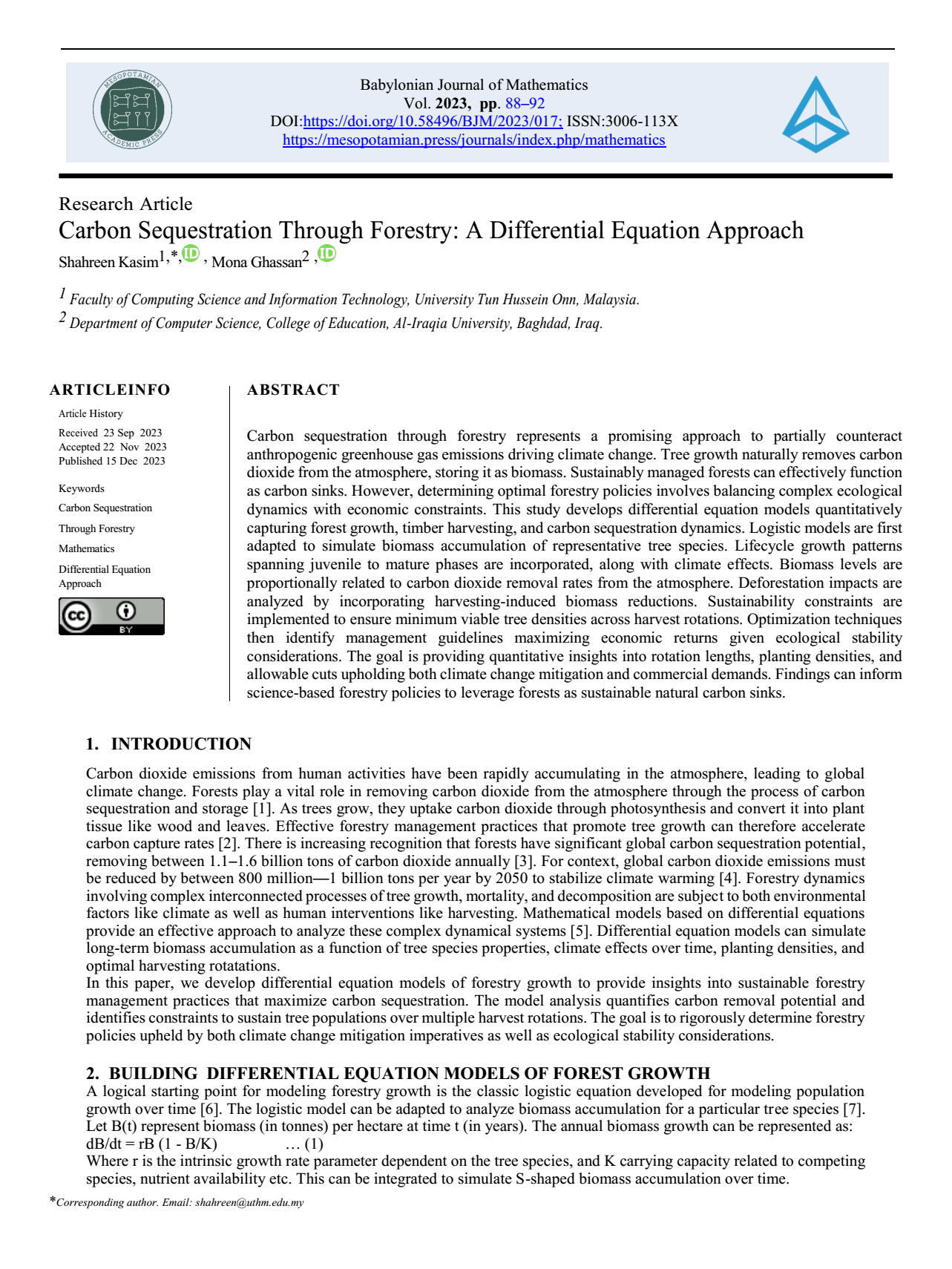Carbon Sequestration Through Forestry: A Differential Equation Approach
Main Article Content
Abstract
Carbon sequestration through forestry represents a promising approach to partially counteract anthropogenic greenhouse gas emissions driving climate change. Tree growth naturally removes carbon dioxide from the atmosphere, storing it as biomass. Sustainably managed forests can effectively function as carbon sinks. However, determining optimal forestry policies involves balancing complex ecological dynamics with economic constraints. This study develops differential equation models quantitatively capturing forest growth, timber harvesting, and carbon sequestration dynamics. Logistic models are first adapted to simulate biomass accumulation of representative tree species. Lifecycle growth patterns spanning juvenile to mature phases are incorporated, along with climate effects. Biomass levels are proportionally related to carbon dioxide removal rates from the atmosphere. Deforestation impacts are analyzed by incorporating harvesting-induced biomass reductions. Sustainability constraints are implemented to ensure minimum viable tree densities across harvest rotations. Optimization techniques then identify management guidelines maximizing economic returns given ecological stability considerations. The goal is providing quantitative insights into rotation lengths, planting densities, and allowable cuts upholding both climate change mitigation and commercial demands. Findings can inform science-based forestry policies to leverage forests as sustainable natural carbon sinks.
